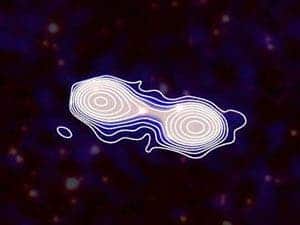I think many of us wanted, at some point in our lives, to become astronauts. Unfortunately, not so many of us actually make it – but that doesn’t mean we can’t help. With only a laptop or a tablet, YOU can help astronomers discover black holes from the comfort of your couch.
An international team of researchers has launched an innovative program which they call a “citizen science” project. Galaxy Zoo basically allows anyone to become a cosmic explorer.

All you have to do is match images taken both in infrared and radio wavelengths – and this will give information on whether or not the galaxy has a supermassive black hole at its center. The infrared data comes from NASA’s Wide-Field Infrared Survey Explorer (WISE) satellite, while the radio data is from the Karl G. Jansky Very Large Array (VLA) in New Mexico – astronomers plan to include even more data.
“It takes about a minute to learn what to do,” said Julie Banfield, an Australian coordinator of the international project from the Commonwealth Scientific and Industrial Research Organization (CSIRO). “Then to actually work with the images takes only a few seconds each—perhaps a couple of minutes for the really tough ones. You just need to match up a couple of pictures and look for what you think is the galaxy at their center.”
Indeed, while the physics behind it is pretty complicated for most people, it’s extremely easy to actually help astronomers. Black holes are the ‘heaviest’ objects in the known universe – exerting a force so large that not even light can escape. Supermassive black holes drag in nearby material, becoming larger and larger, until they ultimately reach a mass of several billion times our Sun. Occasionally, they produce jets of material traveling nearly as fast as the speed of light. These jets often can’t be detected in visible light, but are seen using radio telescopes. Therefore, by matching the images in different wavelengths you can see whether or not the galaxy has a supermassive black hole at its center (like most do).
“Eventually, we will have up to 20 million radio sources that need classifications,” Rudnick said. “Computers and a few astronomers can take us only so far. Pattern recognition by large numbers of people will be essential in finding these black holes.”
In order to better understand how these black holes form and evolve over time, astronomers need to observe many of them at different stages of their lifecycles. To accomplish this, astronomers need help from the public to identify as many black hole/jet pairs as possible and associate them with their host galaxies.
So where can you sign up? HERE!!


